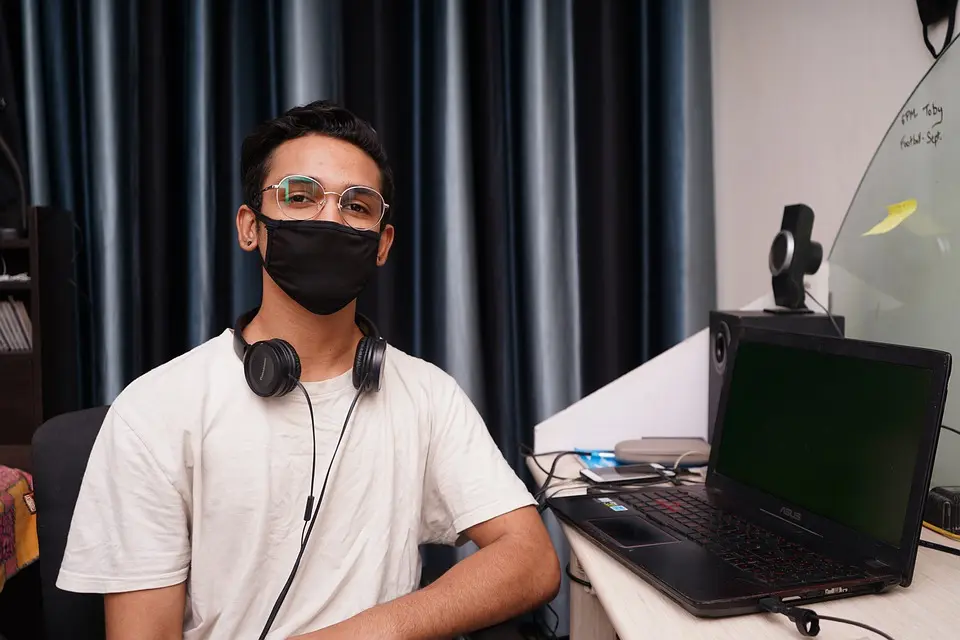By Anvi Kevany
For the school year 2020-2021, many school districts opted to offer virtual learning for the fall semester. Some schools reopened for in-person learning, and then had to close down due to spikes in COVID-19 cases, and some schools chose to provide a hybrid learning program.
Hybrid learning is an educational model where some students attend class in-person, while others join the class virtually from home. Educators teach remote and in-person students at the same time using tools like video conferencing hardware and software. In some cases, hybrid classes include asynchronous learning elements, like online exercises and pre-recorded video instruction, to support face-to-face classroom sessions. Some schools are preparing to transition from virtual learning to hybrid learning, provided health authorities report that it is safe to return to school in small groups.
As a parent of a 16 year old, I have questions as to how my school district will implement the hybrid model, whether or not families have options of staying on to full time virtual learning, or If I should send my daughter for in person learning.
Below are some resources and information on how to understand and prepare for the transition.
1. Checklists for Going Back to School
For many families, back to school planning will look different this year than it has in previous years. Schools will have new policies in place to prevent the spread of COVID-19. Some are starting the school year with virtual learning components. Whatever the situation, these checklists are intended to help parents, guardians, and caregivers, plan and prepare for the upcoming school year.
The checklist includes:
- Decision making tool for parents and guardians
- Planning for in-person classes
- Planning for virtual or at-home learning
- Resources to navigate stress and uncertainty
2. Hybrid School Schedules: More Flexibility; Big Logistical Challenges (Education Week, November 11, 2020)
This article explains the many forms of a hybrid schedule. It explains how a hybrid schedule may offer schools the most flexibility, and the associated risks of putting people indoors together, even when it’s in smaller, socially distanced groups. According to the article, the logistics will not be simple and the learning curves for everyone will be steep.
3. Resources for Remote Learning and Hybrid Learning Families
During this pandemic, families and their children are engaged in a variety of different school formats and Child Care Aware of New Hampshire, powered by Southern New Hampshire Services, hopes to provide support and resources for all families that may be grappling with a variety of learning options, including remote learning, a hybrid model and/or full-time in-person attendance.
4. Blended Learning in the Mix: The Informed Parent
Parents of students in blended learning programs should understand the changing roles of technology and teachers, and make an effort to stay informed about edtech.
5. Alternate Education Options for Gifted Children During a Pandemic & Beyond, with companion presentation PDF and Alternate Education Options: Resources for Parents sheet.
With the pandemic still spiking in many states across the country, parents are stressed and confused as to how they should plan for their gifted children’s education. In-person learning, hybrid, online schools and classes, pandemic pods, microschools, and homeschooling are among the various options that come up in the news and on social media. Which option is right for your family? How do you work with your district or school if you seek an alternative to full-time in-person instruction this year?
6. School Districts and Your State’s Department of Education
Access your school district’s and your state’s Department of Education websites where hybrid/return to school information and resources are provided. Some school districts currently have surveys to be completed in order to plan for hybrid learning; other school districts have outlined detailed information on how hybrid learning will be implemented, such as which schools are more likely to offer in-person learning first, what grades, and the schedule. You can also find out if the school district will be offering alternative options.
Additional Resources on How to Advocate for Your Child’s Education During the Transition Process:
1. How to Advocate for Your Child Virtually: Davidson Weekly Roundup
Many of parents are learning firsthand how different remote learning is from face-to-face learning. It affects content delivery, socialization, and the school-life balance. As a result, the advocacy related to remote learning may also look different. Many parents may have relied on the traditional parent-teacher conferences, physical report cards, or in-school IEP meetings to discuss how to best support their child. Now that many of these face-to-face opportunities have been limited or altogether removed from advocacy efforts, it may be a brave new virtual world that parents must navigate to receive services and supports for their student. In addition to traditional advocacy strategies, other the tools and strategies to help online advocacy be more effective are provided.
2. Modifying an IEP or 504 for Distance or Hybrid Learning:
As the year begins with distance or hybrid learning at most schools, many parents are worried that pre-pandemic IEP plans may leave kids without vital services. Luckily, IEP or 504 plans aren’t set in stone. If you’re concerned your child is struggling (or that they will be once class gets underway), it might be time to make some additions to your child’s plan to incorporate remote learning accommodations. Here’s how you can help your child get the support they need, whatever this school year brings. (Also Available in Spanish.)
How do you feel about going back to in-person learning? If your district is already providing hybrid learning, how is it working for your child?

